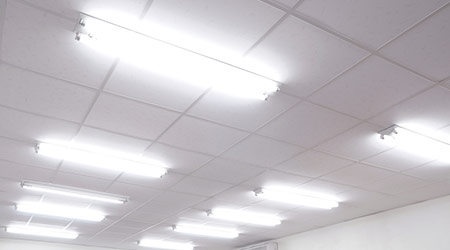Hospitals and medical centers are unique facilities. Maintaining quality of care at all times requires lighting 24 hours a day, 365 days a year. Furthermore, specific lighting is often required to facilitate care and treatment. For many medical centers, fluorescent lamps are the backbone of efficient lighting. Fluorescent lamps, HIDs and sodium lighting provide strong, consistent illumination for a number of applications. While some newer hospitals may have installed LED-lights and other hospitals have performed retrofits to replace fluorescents, the vast majority of existing hospitals use high-output lamps that are mercury-containing.
By federal law, non-residential mercury containing fluorescent bulb users are required to properly dispose of their spent lamps. However, there seems to be some confusion among facility managers and administrators as to what that actually means. Many facilities are not aware that they are breaking the law if they are tossing bulbs into a dumpster to ultimately be sent to a landfill. Unfortunately, the common practice of putting hard to dispose of equipment in storage has been adopted by maintenance employees who also tend to throw spent bulbs into a box. The bulbs are left in boxes until enough boxes to fill a truck have accumulated, and then the boxes are scheduled to be picked up. This method is inefficient and takes up unnecessary space. Waiting for dozens of boxes to be picked up means all those boxes are sitting and tying up valuable space that could be used for therapeutic or administrative purposes. Additionally, there is a one year legal limit on accumulation of universal waste which starts at the time the spent bulb is removed from the lighting fixture.
One solution that solves the issue of space when disposing of spent bulbs is a drum-top bulb-crusher like the BulbEater. This machine crushes linear fluorescents and CFLs quickly and efficiently and can reduce the space needed to store bulbs exponentially. More than 1,350 bulbs can be crushed in one 55-gallon drum that is attached to the machine, condensing the storage footprint of 12 boxes down to a 2’ x 2’ space. Compacting lamps is a tremendous space-saver. Plus you prevent accidental breakage and mercury contamination at your facility.
Compacting spent lamps reduces the potential of mercury being released into the air, which could be a heightened health risk on hospital grounds. If bulbs are sitting in a box for weeks on end, there is a higher risk of an employee accidentally knocking into a box, shattering a bulb, and contaminating the area. The BulbEater® captures the mercury with a 5-stage HEPA filtration system, safely locking hazardous mercury vapor in the carbon stage.
Other benefits include reducing labor associated with the proper packaging of spent lamps. Compacting lamps can also reduce transportation and recycling costs. Rather than having to pay for a truck-load of lamps to be picked up, a hazardous waste pickup with a licensed handler is set up once a 55-gallon is filled with crushed bulbs. Additionally, the facility gets a certificate of recycling that fulfills EPA recordkeeping requirements. Bulbs are recycled at certified processing facilities where the mercury from the bulb, as well as the aluminum fixtures, glass tubing and other materials are reclaimed for use again.
Of course, if a facility is not producing enough lamp recycling to warrant a bulb crusher, it is important that they box and store their waste bulbs in an EPA compliant fashion. Boxed bulbs should always be stored with a plastic liner or vapor-locking box like an EasyPak self-sealing prepaid waste lamp box. The box should always be clearly marked “Universal Waste Lamps” and dated from the day the first lamps are stored.
Many facility managers hear the word “sustainability” and immediately think it means an extra cost to them. However, investing in responsible disposal and recycling practices ultimately cuts overall costs, improves employee safety and keeps the facility EPA compliant. And with healthcare inherently scrutinized by EPA inspectors, it makes good sense to incorporate a proactive fluorescent lamp disposal plan.
Bobby Farris is the General Manager of TerraCycle Regulated Waste.

 UF Health Hospitals Rely on Green Globes to Realize Their Full Potential
UF Health Hospitals Rely on Green Globes to Realize Their Full Potential How Healthcare Facilities Can Be Truly Disaster-Resilient
How Healthcare Facilities Can Be Truly Disaster-Resilient TriasMD Breaks Ground on DISC Surgery Center for San Fernando Valley
TriasMD Breaks Ground on DISC Surgery Center for San Fernando Valley Bigfork Valley Hospital Falls Victim to Data Breach
Bigfork Valley Hospital Falls Victim to Data Breach AI-Driven Facilities: Strategic Planning and Cost Management
AI-Driven Facilities: Strategic Planning and Cost Management